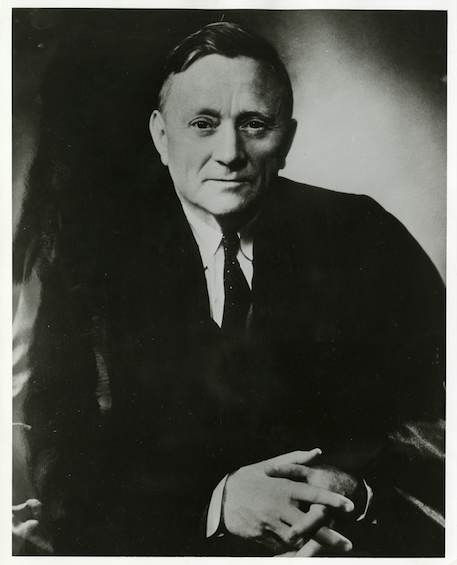
Current Exhibits
William O. Douglas
Longest Serving Supreme Court Justice in U.S. History
William Orville Douglas—the most famous and significant Yakimanian in this museum- was born in 1898 in Maine, Minnesota.
When he was two years old, Douglas suffered from a serious illness that was believed to be polio. Whether it truly was polio or something else, he made a complete recovery. At five years old, he moved with his family to California, then to Cleveland, Washington, at the south edge of the Yakima Valley. His father died the following year in 1904, and the family moved to Yakima.
Life was hard, both financially and physically. To help his mother support the family, he worked various jobs while going to school. Picking cherries and working alongside migrant workers, Douglas later said, inspired him to want to be a lawyer and gave him a deep respect for minorities, laborers, and the natural environment—passions that would guide Douglas for the rest of his life. He said:
“I worked among the very, very poor, the migrant laborers, the Chicanos, and the I.W.W's (Industrial Workers of the World) who I saw being shot at by the police. I saw cruelty and hardness, and my impulse was to be a force in other developments in the law.”
Douglas was a great student, graduating as valedictorian from Yakima High School. He attended Whitman College in Walla Walla, Washington, and Columbia Law School, and later went on to teach law at both Columbia and Yale.
He was recognized by President Franklin Roosevelt and was asked to serve on the United States Securities and Exchange Commission, then appointed to the Supreme Court in 1939 at the age of 40. He served on the Court until his retirement in 1975. FDR considered him as a possible vice-presidential running mate in 1944.
By all accounts, he was not an easy person to get along with and was married four times. As might be expected in a career on the Supreme Court bench spanning over 35 years as an active and retired Justice, Douglas’s relationships with his clerks were not the same in every Term—some clerks found the experience less satisfying than others. The Justice's relationship with his clerks (while varying from year to year and clerk to clerk) was generally to treat his clerks in a friendly, supportive manner when they were not doing the Court's work, but he demanded hard work and high standards while they were.
His Supreme Court decisions were often controversial, and Congressman Gerald Ford attempted, but failed, to start impeachment proceedings against him in 1970.
All of his life, Douglas was a dedicated environmentalist. He often played an active role in lobbying for the preservation and protection of wilderness across the United States—earning him the nickname “Wild Bill.”
After his death, the 1984 Washington Wilderness Act designated the Cougar Lake Roadless area, which adjoins Mount Rainier National Park in Washington State, as the William O. Douglas Wilderness.
Our exhibit recreates his Supreme Court office in Washington, D.C., the contents of which were given to the Museum following Douglas' death in 1980. The Museum’s archives also hold material about his early life in Yakima, his controversial Supreme Court career, his writings, and his continuing legacy in environmental and civil rights law.
There is no doubt Douglas loved this area. He said, “This is one of the quietest, most peaceful spots on this earth. It has special values for me. The state of Washington’s Yakima Valley… is the treasure house of my boyhood. It was there I dreamed the dream I lived as a man. This is my Shangri-La.”
Read more about Douglas at WODouglas.org.
